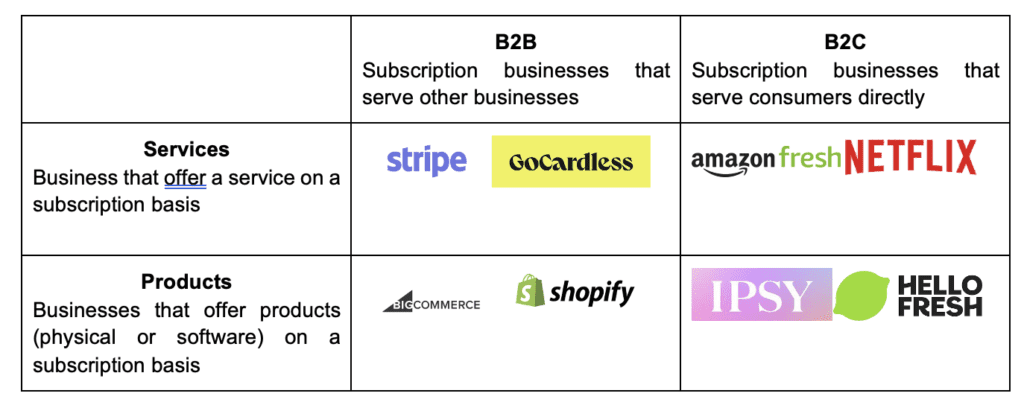Key Highlights
- The average monthly spend for consumers was more than 2.5 times the amount they thought at $219 – a whopping $133 higher than their original estimate with 42% of consumers paying for forgotten subscriptions.
- The subscription economy has grown by 435% over the last decade and is projected to reach a market size of $1.5 trillion by 2025, indicating its permanence as a business model.
What’s in this Article?
- Understanding the subscription-based business model
- Global Market Size of Digital Subscriptions
- Subscription Costs: Estimate Vs Reality
- Why is the Subscription Business Model Sustainable?
- Classification of Subscription-Based Business Models
- Types and popular examples of subscription-based models
Introduction
Subscription-based business models have revolutionized how businesses engage with customers, providing a steady revenue stream while fostering long-term relationships. From magazines and cable TV to modern SaaS platforms and curated subscription boxes, this model has transcended industries and adapted to the evolving consumer landscape. In this blog, we’ll explore the intricacies of subscription-based models, their benefits, and the metrics essential for tracking their success.
What is a Subscription-Based Business Model?
A subscription-based business model charges customers recurring fees—monthly, yearly, or even weekly—for continued access to a product or service. Unlike one-time purchases, this model capitalizes on ongoing customer relationships. It’s popular in both traditional and modern industries, from newspapers and gym memberships to Netflix and cloud storage services. The recurring nature ensures predictable revenue, fostering growth and sustainability for businesses.
Subscription Based Business Model


Global Market Size of Digital Subscription (in USD Bn)


Subscription Costs : Estimates Vs Reality


Consumers initially estimated their monthly spending on subscription services to be $86. However, the actual average monthly spend was significantly higher, totaling $219—more than 2.5 times their original estimate, representing an increase of $133
Why is the Subscription Business Model Sustainable?
1. Predictable Revenue:
Recurring payments ensure a steady cash flow, enabling businesses to forecast and plan better.
2. Long-Term Customer Relationships
Unlike traditional models that focus on one-time sales, subscription models nurture ongoing relationships, encouraging customer loyalty.
3. Enhanced Revenue Opportunities
Over time, businesses can upsell or cross-sell additional services, increasing the average revenue per user.
4. Scalability
The cyclical nature of revenue allows companies to reinvest in their offerings, scaling operations to meet growing demands.
Classification of Subscription-Based Business Models
Subscription businesses can be classified into B2B and B2C depending on who they serve.


Types of Subscription-Based Business Models
1. Membership Subscriptions
This model provides access to exclusive services or perks, such as gym memberships or premium online communities.
2. Software-as-a-Service (SaaS)
SaaS platforms charge users for ongoing access to software, with providers handling maintenance and updates.
3. Box Subscriptions
Subscribers receive curated items, like beauty products or gourmet foods, delivered at regular intervals.
4. Content Subscriptions
Streaming platforms and news outlets use this model to provide unlimited access to content for a recurring fee.
5. Usage-Based Subscriptions
Fees are based on consumption, such as cloud storage or utility services.
6. Freemium Subscriptions
A free basic version entices users, with advanced features available through a paid plan.
7. Community Subscriptions
This model builds a network around a product or service, offering value through connectivity and shared experiences.
Conclusion
Subscription-based business models have redefined customer engagement and revenue generation. By leveraging recurring payments, continuous improvements, and strong retention strategies, businesses can ensure sustainable growth and long-term success. Whether you’re an entrepreneur or an established company, adopting this model could open new avenues for innovation and profitability.

